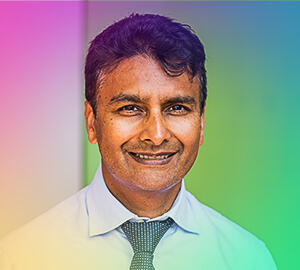The digital divide is an industry-wide challenge which cannot be overcome by any one company or nation. This reality dictates that untraditional partnerships and supportive legislation will be required to set standards and deliver ultra high speed broadband to everyone.
The need for this is urgent – only 4% of UK homes have access to such connectivity levels. But Blu Wireless’s cost-effective mmWave solution, combined with accelerated fibre rollout, can solve the digital divide and deliver the connectivity speeds we need, now.
What caused the Digital Divide?
It is no secret that the fundamental services we consume are becoming increasingly reliant on connectivity. Every day things like streaming services, mobile banking, remote working and even education are significantly compromised without it.
This dependency, however, has not been matched by a supportive connectivity infrastructure. Copper wire fixed-line connections, for example, have been unable to cope with the exponential growth in data consumption provoked by multiple users operating multiple devices on a single network.
While full-fibre broadband connections are seen as the obvious solution to this issue, the return on investment has historically discouraged Internet Service Providers (ISPs) from committing to full-fibre deployment. This is because of the expensive fibre digs needed to implement the technology in both urban and rural areas.
Other than leaving individual businesses and consumers hamstrung, this “last mile problem” has much broader social and economic implications, potentially perpetuating social inequality and negatively impacting GDP.
Digital inclusion and mmWave technology
Digital inclusion is, therefore, a key requirement for society – and 5G technology can help provide it. By using ultra-high frequencies of 5G – namely mmWave technology – and combining them with spatial beamforming which can handle multiple simultaneous users efficiently, data speeds that reach over 100 times that of 4G mobile can be achieved in a cost-effective manner.
5G Fixed Wireless Access (FWA) technology, for example, can be deployed simply and affordably on lampposts and other street furniture owned by local authorities. Blu Wireless recently showcased this in a government-funded 5G testbed for Liverpool City Council. There, mmWave connectivity was leveraged to deliver an improved Health and Social Care service to the city’s elderly population, combatting loneliness, monitoring hydration and overseeing the taking of medication, amongst other things. The potential benefits of this are huge – more comprehensive services can be provided, and more people can fully leverage the benefits of connectivity.
Combatting the digital divide through collaboration
The UK Government in particular has provided significant funding to help achieve this, with six 5G testbeds sanctioned to display the transformative potential of ultra-fast connectivity. These have seen SMEs, local government and major tech companies pooling their expertise in order to jumpstart the deployment of 5G technologies and deliver the connectivity levels required for communities, business and the economy to thrive.
Within this context, new 5G spectrum and mmWave technology in particular is key to delivering fibre-level and cost-effective wireless connectivity to businesses and consumers alike. By continuing collaboration, digital inclusion can become truly ubiquitous – and fast.
Making waves
Blu Wireless are already transforming connectivity infrastructure in the UK. After playing a key role in delivering real-time 4K video data sharing with our partners McLaren and Millbrook in the government-backed AutoAir 5G Testbed, we were proud to recently announce our partnership with FirstGroup, which will enable us to deliver our ultra-fast and resilient 5G connections to train commuters.
Find out more about how our next-generation connectivity can help you accelerate your innovation project, today.









